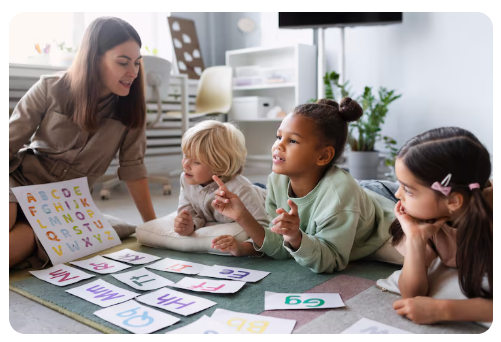Choosing an educational environment for your child is a significant decision that impacts their early development and lifelong love of learning.
The Montessori method, with its emphasis on hands-on, self-directed learning, offers a unique alternative to traditional schooling. However, not all schools that use the name Montessori are the same.
To find an authentic and high-quality Montessori academy that is the perfect fit for your child and your family, it’s essential to look beyond the name and consider several key factors. This guide will walk you through the most important aspects to evaluate when making your choice.
Teacher Training and Experience
The core of a true Montessori education lies in the teacher, often referred to as a guide. These educators should have specialized training from a reputable organization, such as the American Montessori Society (AMS) or the Association Montessori Internationale (AMI).
When visiting a prospective montessori academy, don’t hesitate to ask about the teachers’ credentials and how long they’ve been working at the school. Experienced, well-trained teachers are adept at observing children’s individual needs and providing the right guidance at the right moment.
The Prepared Environment
A hallmark of the Montessori philosophy is the “prepared environment.” This means the classroom is thoughtfully designed to be child-centered, orderly, and aesthetically pleasing. Look for child-sized furniture, low shelves with accessible materials, and a sense of calm purposefulness.
The materials themselves should be authentic Montessori tools, often made of natural materials like wood, and organized in a sequential, logical order. A well-prepared environment in a Montessori academy encourages independence and concentration.
Mixed-Age Classrooms
An authentic Montessori classroom is a multi-age community. Typically, children are grouped in three-year age spans (e.g., ages 3-6).This structure allows older children to act as mentors and role models, reinforcing their own knowledge by teaching younger children.
The younger children, in turn, are inspired and supported by their older peers. This non-competitive environment fosters social skills, empathy, and a strong sense of community within the Montessori academy.
Uninterrupted Work Periods
A core component of the Montessori method is the long, uninterrupted work period, usually lasting two to three hours. During this time, children are free to choose activities that interest them and work at their own pace without interruption.
This practice allows for deep concentration and the development of self-discipline. When you visit a school, observe the work period to see if the children are engaged and focused, and if the teachers are respecting this essential time.
Curriculum and Philosophy
Beyond the classroom setup, it’s vital to understand the school’s curriculum and overall philosophy. A quality Montessori program will focus on the development of the “whole child,” addressing social, emotional, and physical needs in addition to academics.
The curriculum should include subjects like practical life, sensorial exercises, language, mathematics, and cultural studies. Ensure the school’s approach aligns with your own values and educational goals for your child.
Accreditation and Community
While the term “Montessori” is not trademarked, accreditation from a recognized organization is a strong indicator of a school’s commitment to authentic practices. Ask if the school is accredited by a respected national or international body.
Also, consider the school’s community and its relationship with parents. A strong partnership between the school and home is crucial for a child’s success, so look for a Montessori academy that encourages parent involvement and clear communication.

